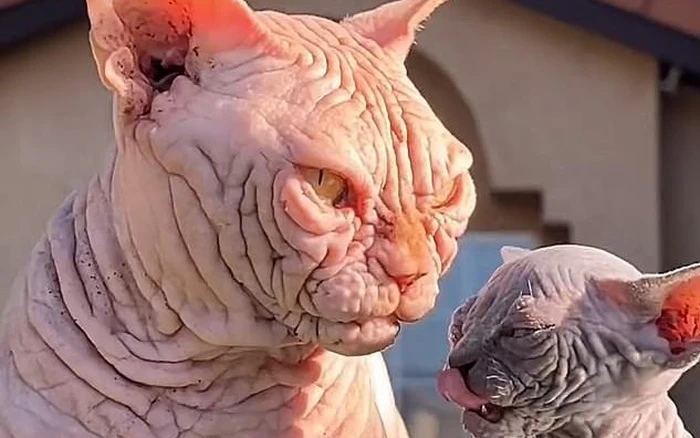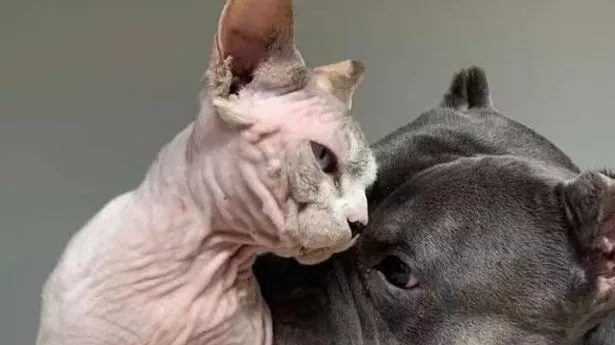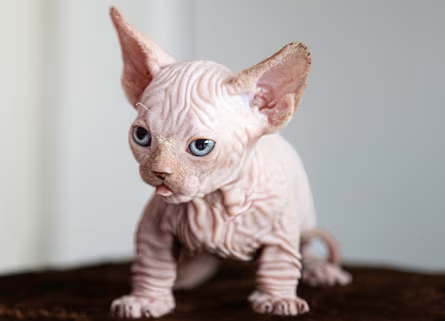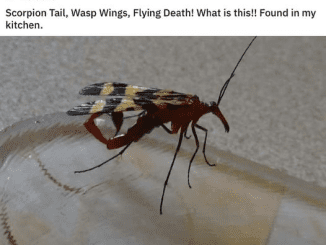The pet world is witnessing a controversial new trend that’s raising alarm among animal welfare experts: the emergence of the “XL Bullycat.” Following the heated debate and eventual ban of the XL Bully dog breed in England and Wales, a similar trend is now targeting cats. The “Bullycat,” often dubbed “bullbino” on social media, combines features of existing breeds to create a designer pet that prioritizes aesthetics over health. But what does this mean for the welfare of these animals? Let’s explore the ethical concerns surrounding this trend and its potential impact.
What Is an ‘XL Bullycat’? The Feline Equivalent of XL Bully Dogs

The term “XL Bullycat” refers to a hybrid feline bred for exaggerated physical features. It is the latest designer breed, following the footsteps of the now-banned XL Bully dog. The XL Bullycat is created by combining the Sphynx cat’s hairlessness with the short-legged traits of the Munchkin cat. The result is a feline with extreme physical characteristics, such as excess skin folds and abnormally short limbs.
The Origins of the ‘Bullycat’ Breed
- Influence of Social Media: Social media platforms have played a crucial role in popularizing the XL Bullycat, often glorifying its unique look without highlighting the potential health risks.
- Designer Breeding: Breeders have capitalized on this trend, intentionally combining genetic traits to create cats with a distinct, albeit controversial, appearance.
The popularity of the XL Bullycat has ignited debates among experts, with many expressing serious concerns about the ethical implications of breeding cats with such extreme physical characteristics.
Why Animal Experts Are Concerned About XL Bullycats
The rapid rise of the XL Bullycat trend has prompted warnings from veterinarians, animal welfare organizations, and researchers. Their primary concern? The health and well-being of these cats, which are often sacrificed for the sake of appearance.
Health Risks Associated with XL Bullycats
- Severe Skin Conditions: The excess skin folds of the XL Bullycat make it highly prone to dermatological issues. Like their Sphynx predecessors, these cats can suffer from painful skin infections and irritation.
- Joint Strain and Mobility Problems: The short legs, a characteristic inherited from Munchkin cats, result in limited mobility. This puts additional strain on their joints, leading to painful arthritis and long-term health problems.
- Shortened Life Expectancy: Dr. Dan O’Neill of the Royal Veterinary College notes that these cats are likely to have a significantly shorter lifespan. Recent research on Sphynx cats showed an average lifespan of just 6.7 years, compared to the overall feline average of 11.7 years.
In light of these risks, animal experts are urging prospective pet owners to consider the ethical consequences of supporting this trend.
The Ethics of Breeding for Aesthetic Appeal
The primary issue with the XL Bullycat trend lies in its focus on aesthetics over animal welfare. Breeding for specific physical traits often comes at a cost to the animal’s health, behavior, and overall quality of life. Dr. Grace Carroll from Queen’s University Belfast advocates for more responsible breeding practices that prioritize an animal’s well-being over market demand.
What Does Ethical Breeding Look Like?
- Prioritizing Health: Ethical breeders focus on producing cats with traits that align with natural feline behaviors, avoiding extreme physical alterations that compromise health.
- Encouraging Natural Behaviors: Cats should be able to perform typical feline activities like climbing, jumping, and exploring—something that XL Bullycats struggle with due to their engineered body shape.
The rise of the XL Bullycat illustrates the dangers of consumer-driven trends that place style over substance. As Dr. Carroll puts it, “Consumers hold purchasing power. We can discourage breeders from prioritizing aesthetics over the health and welfare of the animals by refusing to buy breeds with extreme traits.”
The Role of Social Media in Promoting the XL Bullycat Trend
Social media has been a powerful force behind the rapid spread of the XL Bullycat trend. Platforms like Instagram and TikTok are filled with photos and videos showcasing the unique look of these designer cats, often without mentioning the potential health risks. This social media phenomenon has contributed to increased demand for the XL Bullycat, further driving breeders to produce more.
The Impact of Viral Trends on Animal Welfare
- Encouraging Unethical Breeding: The pursuit of viral fame has led some breeders to focus more on creating eye-catching pets rather than ensuring their animals are healthy and happy.
- Normalizing Extreme Traits: Constant exposure to extreme pet breeds on social media can normalize unnatural body shapes, making them seem desirable instead of harmful.
Animal welfare organizations are calling for more responsible use of social media to promote pets. They urge influencers and content creators to raise awareness about the risks associated with extreme breeding practices.
Animal Welfare Organizations Respond to the XL Bullycat Trend
Organizations like Cats Protection, the RSPCA, and the NatureWatch Foundation have all spoken out against the rise of the XL Bullycat. Their message is clear: adopt, don’t shop—especially when it comes to breeds that are intentionally engineered for extreme traits.
Key Recommendations from Animal Welfare Groups:
- Adoption Over Purchasing: Animal welfare groups encourage potential pet owners to consider adopting from shelters rather than buying from breeders, particularly those known for producing extreme breeds.
- Education on Responsible Pet Ownership: These organizations emphasize the importance of educating the public about the ethical implications of supporting trends like the XL Bullycat.

The RSPCA has also raised concerns that the demand for Bullycats is fueling unethical breeding practices similar to those seen in the dog world, urging people to think carefully before purchasing such pets.
What Can Be Done to Prevent Harmful Breeding Trends?
The rise of the XL Bullycat highlights a broader issue in the pet industry: the need for stricter regulations and greater public awareness about ethical breeding. Here are some steps that can be taken to address this problem:
Promote Ethical Breeding Standards
Encouraging breeders to follow strict guidelines that prioritize animal welfare can help reduce the production of extreme breeds. Stricter breeding regulations and enforcement can prevent unethical practices.
Raise Awareness Through Education

Educating prospective pet owners about the risks associated with designer breeds can discourage demand. Awareness campaigns led by animal welfare groups can inform the public about the potential consequences of supporting such trends.
Conclusion: Let Cats Be Cats
The XL Bullycat trend is a stark reminder of how far aesthetics can be prioritized over an animal’s well-being. As consumers, it’s crucial to make informed decisions when choosing a pet, considering health and natural behavior over viral appeal. The message from animal experts is simple: let cats be cats, with bodies that support their natural instincts and a life free of unnecessary health challenges. By promoting responsible breeding and adopting from shelters, we can ensure that future pets are healthier, happier, and more likely to lead fulfilling lives.


